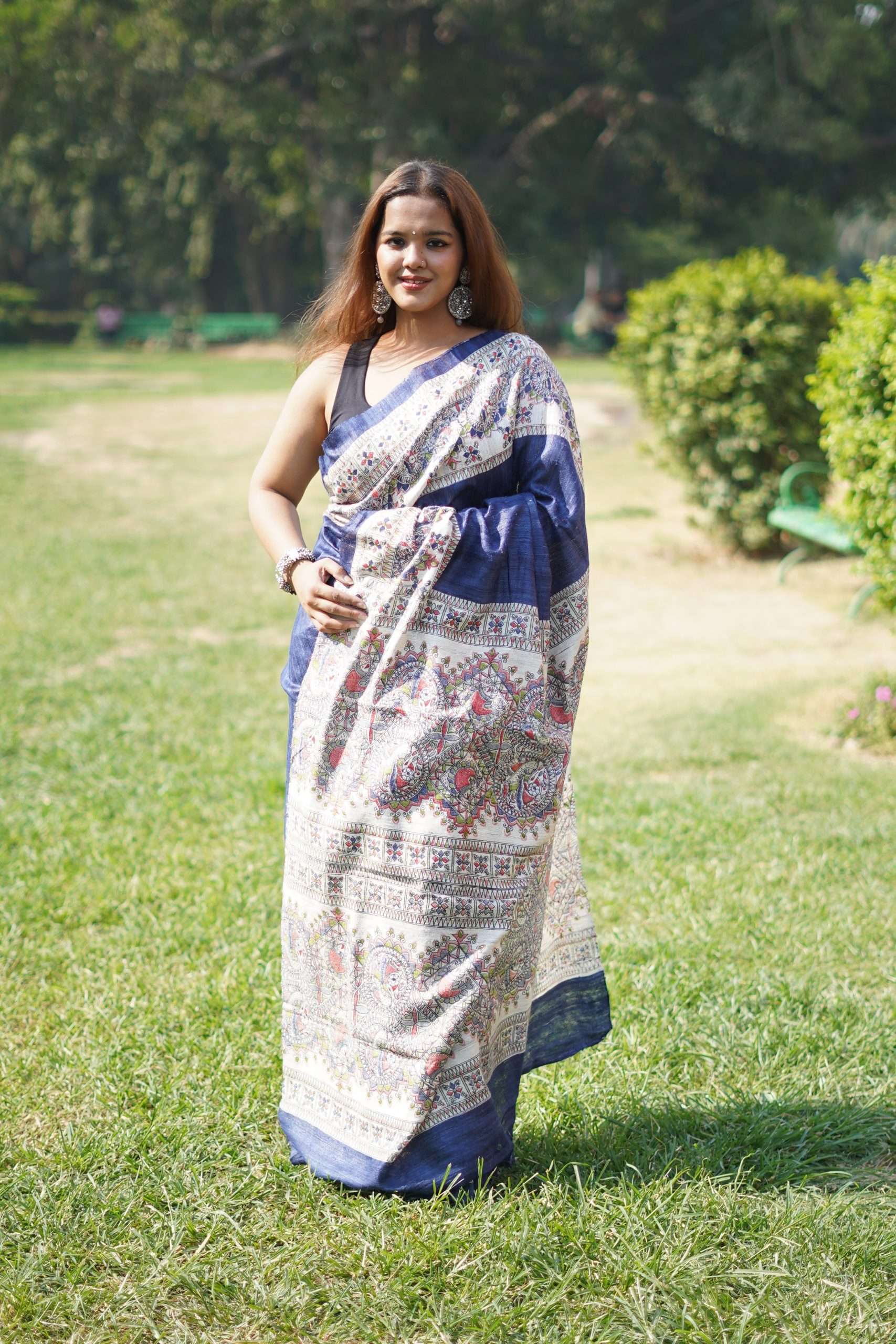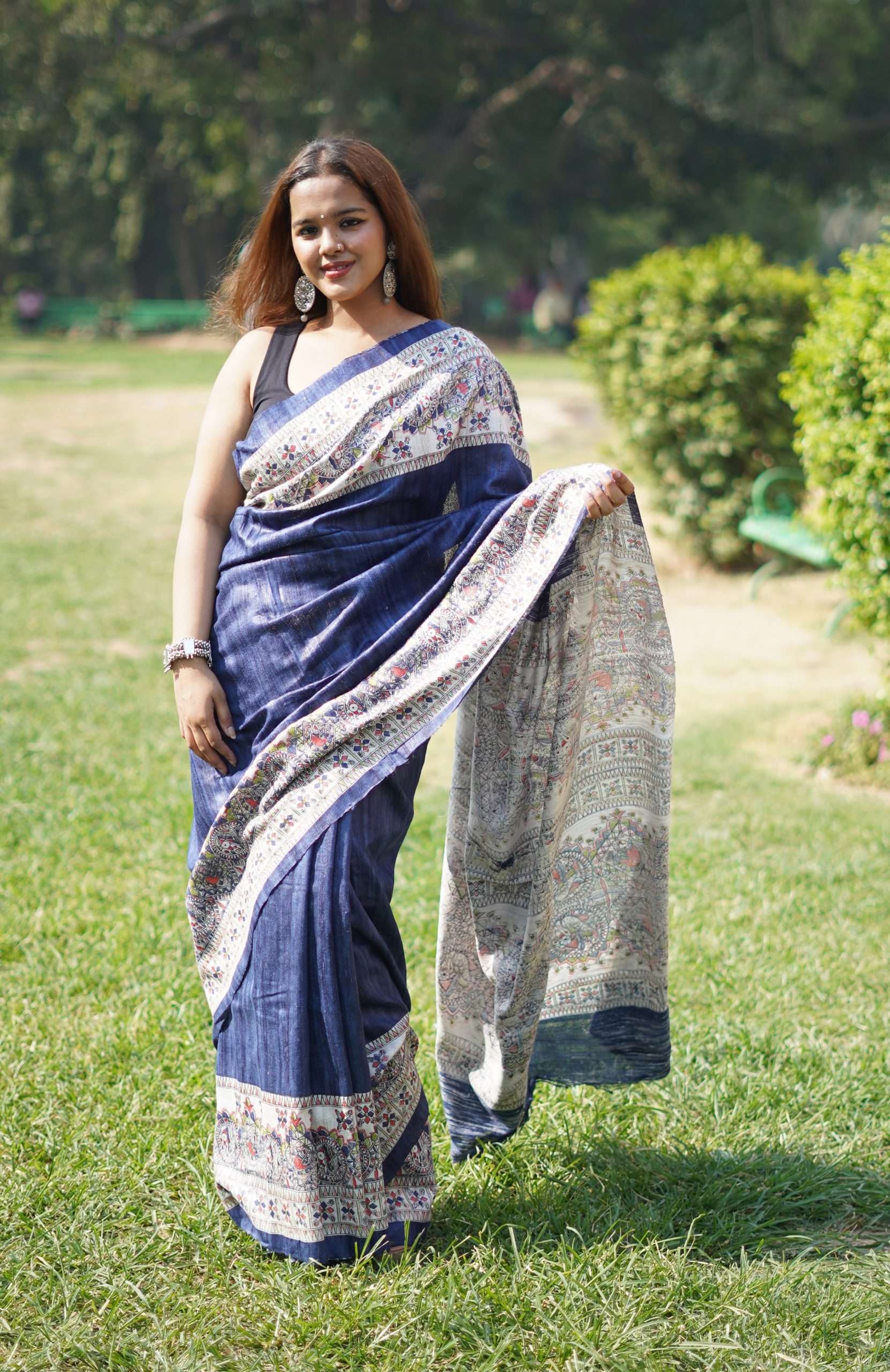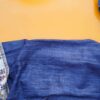Tussar silk is derived from the cocoons of several species of silk worms, particularly the Antheraea mylitta and Antheraea proylei silkworms. These worms primarily feed on leaves of the Asan and Arjun trees.
Tussar Ghicha silk is known for its rich texture and natural dull gold sheen. The fabric has a slightly rough texture, giving it a rustic and earthy appeal. Ghicha refers to the short fibers that are collected from the cocoons after the main silk threads have been harvested. These short fibers are spun together to create Tussar Ghicha silk yarn, resulting in a fabric with a unique texture.
Tussar silk is renowned for its strength and durability. Despite its coarse texture, it is considered a durable fabric suitable for a variety of uses.
Tussar Ghicha silk can be dyed in a wide range of colors and is often used for traditional Indian garments such as sarees, salwar suits, and dupattas. It also takes well to printing techniques like block printing and screen printing, adding versatility to its use in fashion.
Tussar silk holds cultural significance in India, particularly in states like Bihar, Jharkhand, and West Bengal, where it is widely produced. It is often used to create traditional Indian attire and is favored for its natural and organic appeal.
Tussar silk production is relatively eco-friendly as it involves minimal use of chemicals and pesticides. The silk worms feed on leaves of naturally occurring trees, reducing the environmental impact associated with silk production.
Overall, Tussar Ghicha silk is valued for its natural beauty, durability, and cultural significance, making it a sought-after fabric for both traditional and contemporary clothing designs.














Reviews
There are no reviews yet.